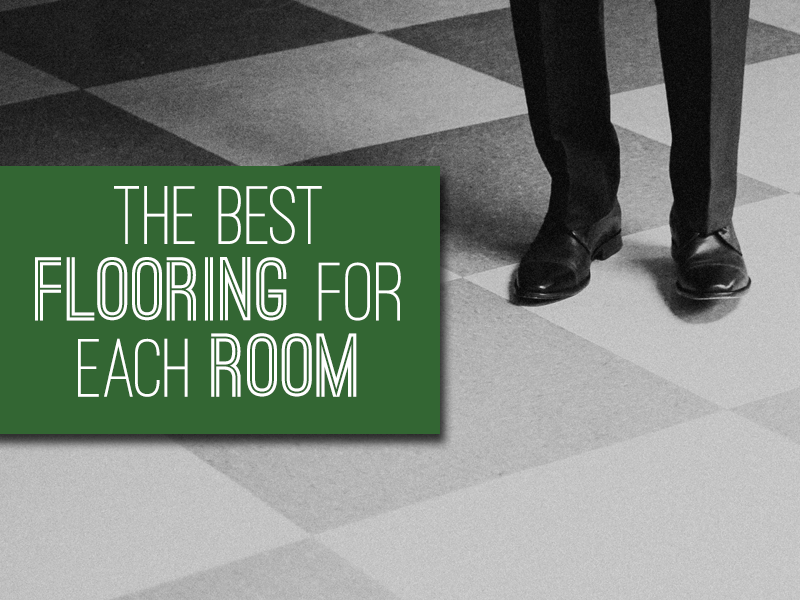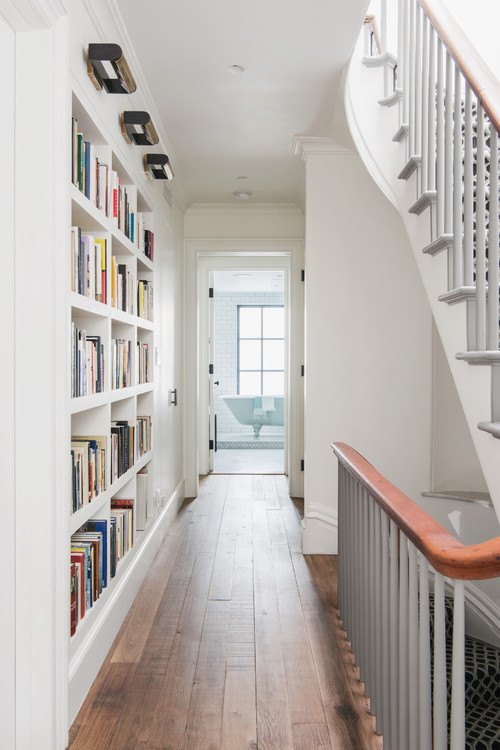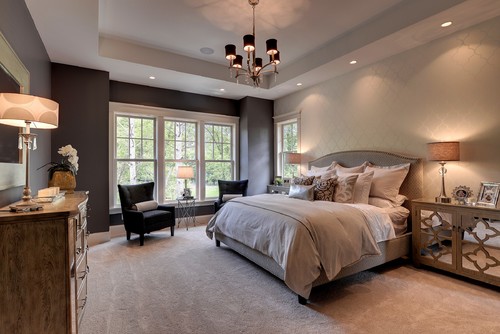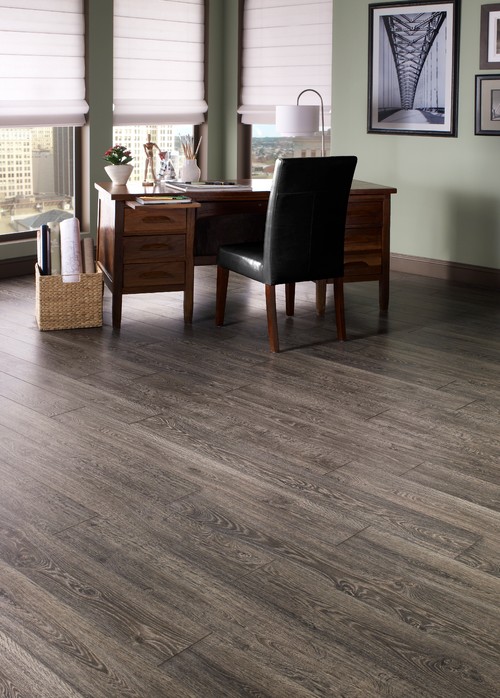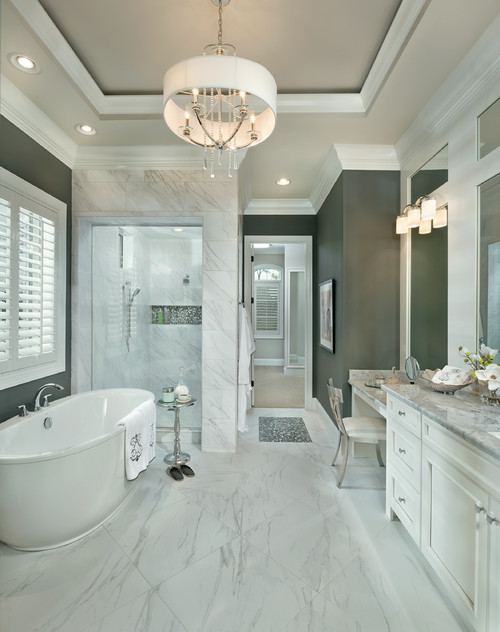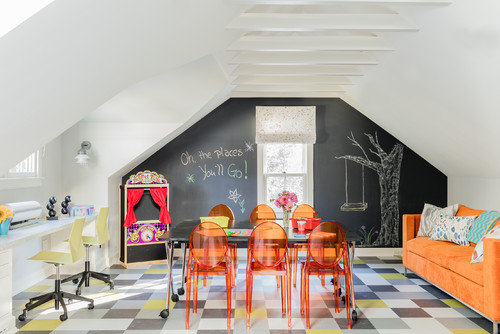A few weeks ago, we wrote about the different flooring options you have for your home, with the advantages and disadvantages of each.
In this post, we’d like to tell you about some of the things to consider for each room of the house, and our favorite flooring option.
The Welcoming Hallway
The entrance and hallway are the first impressions people have when they walk into your home, and while almost any type of flooring will work, you really want to focus on durability as well as look.
Entrances and hallways endure a lot of heavy footfall, but it’s not an area people spend a lot of time in. So while wall-to-wall carpeting in this area won’t work because it’s difficult to clean, a stylish rug can be a perfect and stylish complement to a hardwood floor or ceramic tiling.
Our top choice: Hardwood floors, because they’re stable underfoot and easy to clean: dirt won’t be spotted as easily as ceramic tiles, and scuffs and scratches won’t show as much.
The On-Trend Kitchen
Modern or traditional kitchens can carry off a wide variety of flooring possibilities, and all can work well, even with the heavy-duty use the kitchen gets.
Linoleum and vinyl are non-expensive traditional choices but scratch more easily, while a more luxurious ceramic is the easiest to clean but adds thickness to the floor (make sure there’s enough room to fit the fridge and stove!). If you have wooden flooring in your living or dining room, extending it to the kitchen can make the whole area look bigger and more cohesive.
Our top choice: For the chef at home, cork is a great and modern green option. It’s soft underfoot for those long hours slaving over the oven, water-resistant, and non-absorbent. And it won’t burn if you drop the frying pan by accident!
The Tranquil Living Room
The living room is where you want to feel effortlessly comfortable, whether you’re on your own reading a book or sharing intimate secrets with a friend. Carpeting has been a traditional option because it offers soft padding on your foot and keeps the heat in. Bamboo and cork make for an interesting twist that work well with modern homes.
Our top choice: Hardwood is still our favorite for the living room, offering timeless elegance as well as warmth. Topped with a chic color-pop, textured rug, you’ll have comfort as well as style. We recommend matching the flooring here with the entrance and hallway to create a seamless link.
When you’re entertaining friends and family, you want to set the scene for easy elegance and friendly tones. Spills happen, chairs grind against the floor, glasses get dropped, heels scrape the floor: the dining room can take a lot of wear-and-tear…but only if your flooring is up for it.
Carpet is warm and comes in various textures and patterns, but will be unforgiving for spills. Softer alternatives to wooden flooring such as vinyl and cork can get scratched and spoiled. Laminate is more enduring and easier to install, but it won’t last as long as wooden flooring, which can be refinished.
Our top choice: Durable and luxurious, wooden floors are a look that never gets old. Use the same flooring between the living room and the dining room to create a sophisticated space. A close runner-up? Stone or ceramic tiles, which are easy to clean and resistant to dents and scratches!
The Cozy Bedroom
The bedroom is where we look for peace and comfort, so the flooring here is an important decision – and style is equally important. For the most intimate room of the house, the softness and warmth of the carpet underfoot is unbeatable for many. Cork, bamboo, and wood laminate are also popular options.
Our top choice: Luxury carpeting, because there’s nothing nicer than getting up from bed and landing on something warm and soft. Hardwood floors are so versatile they can look great in a bedroom, topped with textured, chic rugs.
The Stylish Home Office
Always dreamed of your own home office? Keeping it simple is key for a clean, uncluttered area where you can focus and work comfortably. You may want to invite clients to this room, so people often choose a simple and elegant décor, and the floor has a big part to play. You also may want something that’s classy, easy to clean, and not too high maintenance.
Our top choice: We love laminate and hardwood floors in dark, rich colors for home offices. Not only does this kind of flooring exude sophistication, it lets you slide around your office chair for that extra bit of fun.
The Breezy Bathroom
There’s not as much traffic in a bathroom as a kitchen, but it does take a lot of abuse. Waterproof options are best for this area. Carpet is obviously not suitable at all in a bathroom, where mold can grow easily. And while linoleum is back in trend, and some new designs incorporate wood and marble in bathrooms, these aren’t the easiest to clean and can easily get scratched.
Our top choice: Porcelain tile is ideal in bathrooms, and you can install underfloor heating for ultimate comfort. A more affordable option is vinyl, but it’s less durable and can get slippery when wet.
The Happy Playroom
For a play den, you want the walls and floors to absorb the sounds of play and the pitter-patter of tiny feet. You want people to be comfortable in playrooms, which have to put up with lots of stains, tears, spills, and play. Carpets are definitely out, as are stone and tiles. Wood, cork, bamboo, and vinyl are good options.
Our top choice: For playrooms, cork is ideal as it’s warm and soft for children who like to play on floors.
Final Thoughts
With today’s options in flooring, it’s hard to really go wrong. By thinking about how you’ll be using a room, you’ll be able to find the flooring that best suits its use, making the most of your investment.
At Keith Green Construction, we’ll be happy to help guide you on your flooring needs.

